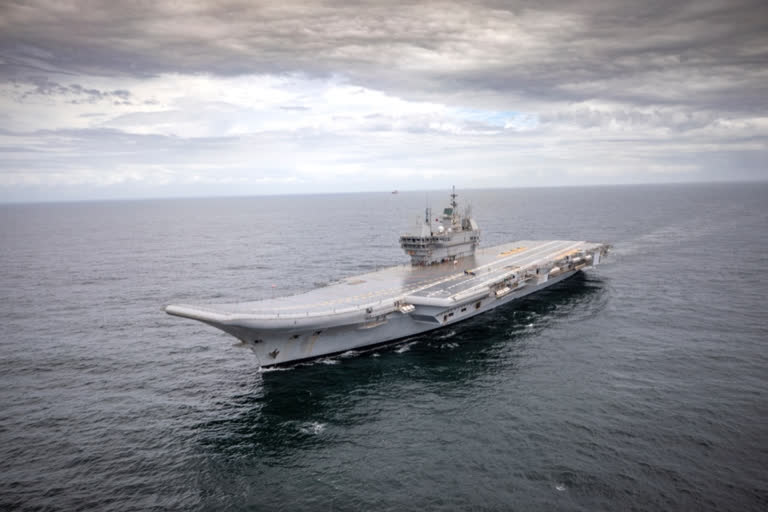New Delhi: Despite an under-stated preference for stealth submarines in the wish-list of the Indian Navy (IN), the guiding philosophy has always been the acquisition of at least three aircraft carriers—with the task of building the third one expected to be easier as it would ride on the acquired experience of having already built one.
At the moment, the IN operates the lone aircraft carrier INS Vikramaditya since November 2013 acquired from Russia while the 37,500-ton Indigenous Aircraft Carrier-1 (IAC-1), to be christened INS Vikrant on being commissioned, embarked on a much delayed four-day sea trial in the Arabian Sea on Wednesday from the Cochin Shipyard Ltd (CSL). Yet the hunt continues for a third one.
The ongoing sea trial is just the first in a series of tests that is expected to take some months while the IAC-1 is hoped to be with the IN by 2023.
Also read: Indigenous Aircraft Carrier 'Vikrant' sails for her maiden sea trials
“It is only after the IAC-1 is commissioned in the IN that the trials where aircraft and helicopters loaded with weapons will take off or land under varied sea conditions like day and nighttime, including fitting or armaments, parking the air assets or towing them to the deck,” an IN official familiar with the development said.
Broadly, the IAC-1’s sea trials will involve tests on parameters like ‘draught test’ (to determine the minimum depth of water for the ship to safely navigate. The IAC-1 is expected to have a draught of 30 metres), ‘anchoring’ (to check the dynamic stability of the ship after the anchor is dropped to about 80 metres). ‘steering’ (to check the manoeuvrability), engine endurance, speed test, testing electronic equipments etc.
While China’s People’s Liberation Army Navy (PLAN) operates two aircraft carriers—Shandong (70,000 ton) and Liaoning (67,500 ton)—the US operates 11 ‘super’ aircraft carriers all with tonnage of more than 1,00,000 tons.
In its Perspective Plan (1985-2000), the IN put its requirement of three aircraft carriers—with two to be operational on the east and west seaboards while one may be in refit at any given point of time. This was further reiterated in the Maritime Capability Perspective Plan (2012-27).
Also read: IAC is country's pride and a shining example of Atmanirbhar Bharat: Rajnath Singh
Traditionally considered a depiction of real prowess in the seas, aircraft carriers—seen as moving airport platforms—are huge force multipliers. But of late, in the era of ballistic missiles and hypersonic weapons, there has been marked erosion in the importance of these expensive assets.
An aircraft carrier usually goes through a three-phase process of trials. The first is the dock trial where instruments and machineries are tested inland in the pier and dock, the second phase comprises the sea trial which is undertaken by the builders—which is CSL in this case—while the third phase comprises the acceptance trials that are undertaken by the buyer (IN) just before the delivery.



